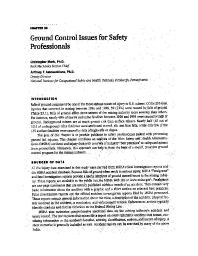 |
Falls of ground continue to be one of the most serious causes of injury to U.S. miners. Of the 256 fatal injuries that occurred in mining between 1996 and 1998, 59 (23%) were caused by falls of round (Table 23.1). Falls of ground affect some sectors of the mining industry more severely than others. For instance, nearly 40% of the 98 coal mine fatalities between 1996 and 1998 were caused by falls of ground. Underground miners are at much greater risk than surface miners. Nearly half (45 out of 101) of underground mine fatalities were attributed to roof, rib, and face falls, while only 6% of the 155 surface fatalities were caused by falls of highwalls or slopes. The goal of this chapter is to provide guidance to safety professionals tasked with preventing ground fall injuries. This chapter combines an analysis of the Mine Safety and Health Administration's (MSHA) accident and injury data with a survey of industry "best practices" to safeguard miners from ground falls. Ultimately, this approach can help to form the basis of a sound, proactive ground control program for the mining industry.
| Author(s): | Mark-C, Iannacchione-AT |
| Reference: | Mine Health and Safety Management, 2001, Nov M. Karmis, Littleton, Colorado: Society for Mining, Metallurgy, and Exploration, Inc., :347-367 |
gcifs (PDF, 1641 KB)